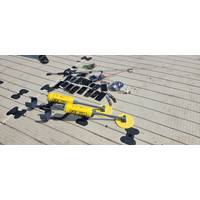
Underwater Metal Detectors Help Solve Crimes
agencies and other forensic teams across the globe who are tasked with locating missing evidence. This missing evidence can help solve crimes and provide families with closure.It is a commercial grade detector that will locate any metallic object, which is key component to finding disposed of weapons, cell phones and any other items that criminals don’t want found.According to the manufacturer, it was used in helping to recover evidence in one of the highest profile murder mysteries to hit the New York City area. In the Spring of 2010, a woman named Shannon Gilbert made a phone call to 911. She had

The Ocean Could Store Vast Amounts of Captured Carbon – But We Need Deep Ocean Sensors to Track the Effects
exist?We’re already doing much of this engineering and technology development. What we haven’t done yet is stitch it all together.For example, we have a team that works with blue light lasers for communicating in the ocean. Underwater, you can’t use electromagnetic radiation as cellphones do, because seawater is conductive. Instead, you have to use sound or light to communicate underwater.We also have an acoustics communications group that works on swarming technologies and communications between nearby vehicles. Another group works on how to dock vehicles into moorings in the
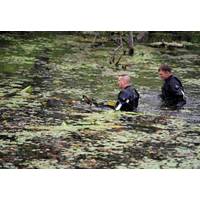
Recovering Evidence with Technology
.A metal detector serves as an invaluable tool in the search for and recovery of missing, metallic evidence. This evidence can range from shotguns and handguns to ammunition and knives. As technology advances it’s not only firearms that are now being used in crimes. In today’s modern age cell phones are a massive, crime related item actively being sought by investigators on scene. Phones contain multiple sources of information that could lead investigators down the right path of case solving, becoming essential to recover. The Pulse 8X is the perfect tool to help locate that missing evidence
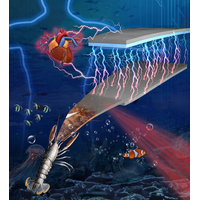
Device Turns Shells of Sea Creatures Into Power
friendly production of flexible TENGs for self-powered nanosystems in biomedical and environmental applications,” Wu said.Wu said the technology can be useful for medical sensors to monitor the activity of the heart or brain, or to help with touchscreen technologies on medical devices or cellphones. He said the TENG innovation also has applications for virtual and augmented reality technologies, as the Purdue innovation can detect body movement and turn the mechanical energy into electrical energy.The team worked with the Purdue Research Foundation Office of Technology Commercialization
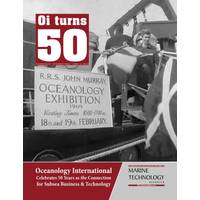
Oi: Tracking 50 Years of Ocean Innovation
outside of the exhibition hall. The next event in London is scheduled for March 2020. Photo: Oceanology InternationalWhen I started, everything was made with valves and vacuum tubes and single transistors. Now, everything is digital. The whole microprocessor world happened. In the 1960s, there were no cell phones, no internet, no Google. Anything you wanted to do was harder.”Now there are autonomous vehicle swarms that are being used for search operations, such as for the lost Argentinian submarine. “That’s exciting. We’re starting to get to the point where you can work from home
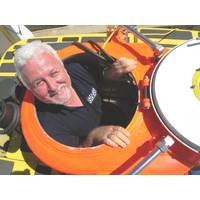
View from the Top: Dr. James Delgado, NOAA Director of Maritime Heritage
on the move, a late afternoon phone call found him in mid-transit on land, with a few minutes to generously give his views on the field he has poured his life’s work into. When Delgado began diving into the depths looking for history under the sea, there was no Internet, no cell phones, and mapping a wreck underwater was done by hand, by setting up grids, using tapes and writing notes on plastic slates covered with Mylar. How have things changed in the world of maritime archaeology? Technology has changed so rapidly in the undersea world that I feel in some ways as
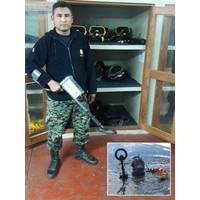
Underwater Metal Detectors Help Police, Military
scene that needs to be searched. With the county surrounded on three sides by water the 9 member dive team sees a lot of action. Sgt. Michael Ferdon reports, “we have made a number of great finds with our Pulse 8X in the 11 years I’ve been on the dive team. We’ve found guns, knives, cell phones and many other pieces of evidence. In a recent case we used the detector to search for a couple of stolen firearms allegedly tossed into a pond. No guns were located; allowing us to discredit the informant.” He went on to say, “Thanks for your wonderful products and top notch customer
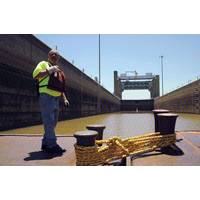
Inland Waterway Safety Advancement: Port of Pittsburgh & CONSUL Join Hands
system, was launched in 2012 through grants from Allegheny County, the Department of Homeland Security, and the Port of Pittsburgh Commission. CONXX Pennsylvania, Inc., a developer of network architecture and infrastructure in Johnstown, constructed the network, which will be available on cellphones, iPads and other wireless devices. To date, the technology has been installed on CONSOL Energy's M/V Safety Pledge, vessels owned by Campbell Transportation, and the Gateway Clipper. The M/V Safety Pledge is also testing the Wireless Waterways Broadband Network for Quality of Life initiatives

Ready for Launch: MTN Nexus Targets high-volume Cruise Market
. In the past few years we have seen an exponential growth in the use of mobile devices and social media. Whereas passengers used to go on cruises to disconnect, they now want to upload pictures from their excursions on Facebook so family and friends back at home can see what they’re doing. Cell phones and tablets are now preferred over laptops to surf the internet, which has been pushing the industry to shape new communication products and services to attend to this demand. The market requires apps that are optimized to be used with satellite, that deliver a mobile-friendly log interface, and


 February 2024
February 2024





